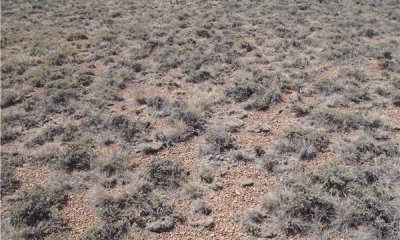
Dry Exposure Gunnison Basin LRU
Scenario model
Current ecosystem state
Select a state
Management practices/drivers
Select a transition or restoration pathway
- Transition T1A More details
- Restoration pathway R2A More details
-
No transition or restoration pathway between the selected states has been described
Target ecosystem state
Select a state
State 1
Reference State










Description
The reference state is a perennial bunchgrass/shrub community. The site is treeless. Grasses, woody shrubs such as black sagebrush, and several forbs make up most of the vegetative cover. Indian ricegrass, blue grama, pine needlegrass, needle and thread, prairie Junegrass, bottlebrush squirreltail, Sandberg bluegrass, muttongrass, and upland sedges create a sparse grassland appearance in which the black sagebrush is noticeable. Hood's phlox, winterfat, buckwheat, and fringed sage are common. Small amounts of mountain big sagebrush, Wyoming big sagebrush, serviceberry, spineless horsebrush, and antelope bitterbrush may be present, especially at the edges of the site. The species composition and relative productivity may fluctuate from year to year, depending on precipitation and other climatic factors.
Historically, black sagebrush communities experienced an extended fire return interval due to the widely spaced shrubs and low production of herbaceous material (fine fuel). Establishment of sagebrush seedlings is solely from seed, and recruitment pulses are episodic based on favorable climatic conditions. Black sagebrush may be heavily browsed. Browsing should be monitored to ensure that sufficient new seedlings are establishing to replace the current stand. Drought may compound the effects of heavy browsing (Winward, 2004).
Submodel
State 2
Mature Black Sagebrush




Description
State 2 is a black sagebrush dominated community. This state has an increase in shrub cover and a decrease in the understory cover from State 1. The sagebrush community is a single age stand.
Submodel
Mechanism
Improper grazing for extended periods during the growing season can reduce the understory and favor encroachment by sagebrush. Lack of fire over time also can cause this transition (McIver, et al, 2010). Extended periods of drought and lack of insects or pathogens can result in a single-aged stand of sagebrush. This transition is characterized by loss of understory, increased bare ground between shrubs, and increased soil erosion. Inappropriate grazing decreases the abundance of fine fuel and shifts the fire regime to longer intervals.
Mechanism
Proper grazing, wet climatic periods, fire after seed set of the understory, and small scale mortality of shrubs due to insects or pathogens can move the community toward a more diverse understory and away from a dense, single-aged stand of sagebrush (Evers et al, 2011). Shrub management, including application of herbicides and prescribed burning, can be used to mimic this pathway. Seeding of native species after burning is severely limited by the rocky, shallow soils, the harsh climate, and the high potential for runoff. The rockiness of the soils also severely limits the use of ground-moving equipment for brush management.
Model keys
Briefcase
Add ecological sites and Major Land Resource Areas to your briefcase by clicking on the briefcase (![]() ) icon wherever it occurs. Drag and drop items to reorder. Cookies are used to store briefcase items between browsing sessions. Because of this, the number of items that can be added to your briefcase is limited, and briefcase items added on one device and browser cannot be accessed from another device or browser. Users who do not wish to place cookies on their devices should not use the briefcase tool. Briefcase cookies serve no other purpose than described here and are deleted whenever browsing history is cleared.
) icon wherever it occurs. Drag and drop items to reorder. Cookies are used to store briefcase items between browsing sessions. Because of this, the number of items that can be added to your briefcase is limited, and briefcase items added on one device and browser cannot be accessed from another device or browser. Users who do not wish to place cookies on their devices should not use the briefcase tool. Briefcase cookies serve no other purpose than described here and are deleted whenever browsing history is cleared.
Ecological sites
Major Land Resource Areas
The Ecosystem Dynamics Interpretive Tool is an information system framework developed by the USDA-ARS Jornada Experimental Range, USDA Natural Resources Conservation Service, and New Mexico State University.

